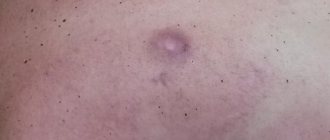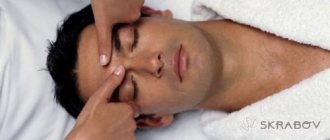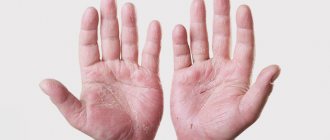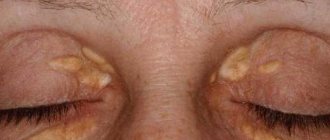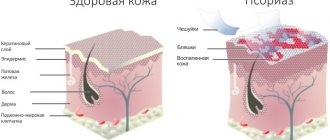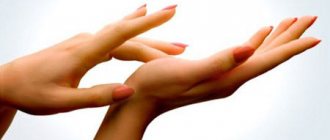The dream of every woman is to be young and attractive at any age. Skin aging is the result of a combination of many factors: hormonal changes, decreased collagen production, and damage caused by external factors. Currently, cosmetologists offer ways to improve the condition of facial skin through injections.
The contents injected under the skin in certain areas of the face are either nutrients (hyaluronic acid injections, mesotherapy) or muscle relaxants. Persistent wrinkle lines between the eyebrows, on the forehead, around the eyes, caused by prolonged muscle contraction, are smoothed out well after Botox injections.
Women who want to undergo such procedures are always worried about the question: will there be traces of the injections? Injections are performed with disposable syringes with thin sterile needles, so small hemorrhages left from the injections usually resolve after a couple of days. If the procedure was carried out by a competent specialist in compliance with all methods, and there were no contraindications (allergies, reduced clotting, taking antibiotics, etc.), then there should be no reason for worry. In rare cases, slight swelling and bruising under the eyes may occur, which also quickly resolve without the use of special procedures.
If necessary, you can use special medications to accelerate the resorption of hematomas and microbleeds. Homeopathic ointment or cream Traumeel-S contains a complex of medicinal herbs and other substances and is sold in pharmacies without a prescription. It is necessary to apply it to the disturbing areas, lightly rubbing, 2-3 times a day. Applications with bodyaga powder or the use of the more modern Bodyaga gel will be effective. But you need to remember that it cannot be applied to the delicate areas of the skin under the eyes and this drug has the greatest effect on fresh hematomas. Semi-alcohol compresses also work well, but their daily use can dry out the skin. Ointments and gels with heparin are more effective: Lyoton, heparin ointment, etc. They are usually recommended to be applied 2 times a day for no longer than two weeks. The administration of vitamin C, aevit, selmevit and other vitamins also promotes the rapid resorption of hemorrhages from injections after injections.
In any case, you need to remember that injections on the face should be carried out only by specialists, taking into account contraindications, then no side effects will arise.
First of all, you should listen to yourself and realistically assess the degree of danger from bruises that appear at the injection site. If this area of skin is hot to the touch, you feel throbbing pain, and the hematoma is accompanied by a lump that increases in size every day, and besides, your pain has increased, self-medication is unacceptable. You should consult a doctor immediately. Otherwise, you can get an extensive abscess, sepsis, fistula, or even purulent complications.
If the bruise does not bother you too much, there is no swelling at the injection site, and the temperature is not elevated, you can try to cope with the unpleasant consequences of the injections yourself.
Buy an ointment with a resolving effect at the pharmacy - heparin, troxevasin or troxerutin and rub it into the problem area 2-3 times a day. Today there are also creams on sale with all kinds of additives that have a resolving effect: “Bruise OFF”, “Ambulance for bruises and contusions”, “Arnica”, “Lioton”, etc. Use according to the instructions. A cream containing chestnut extract or leech saliva (hirudin) will help.
At the pharmacy you can also buy bodyagi (badyagi) powder, composition according to the instructions and rub into the affected area. There is also a cream based on bodyagi.
Use folk recipes that are no less effective than pharmaceutical products in helping with bruises after injections.
Take a leaf of fresh cabbage and beat it a little. So that the juice comes out. Lubricate it with honey and apply it to the hematoma. If you secure this compress with a bandage, you can keep it on all night. In addition to the absorbent effect, it also has an analgesic effect. You can replace the cabbage leaf with burdock (the rest of the steps are similar).
Draw an iodine mesh at the injection site with a cotton swab. Do this 3-4 times during the day.
And here is an old recipe, proven over centuries. Prepare a medicinal cake. To do this, grate a stick of fresh horseradish and squeeze out the juice through 2 layers of gauze. Take 1 tsp. of this juice and add 1 tbsp to it. honey and butter. Stir. Add 1 egg yolk and flour to the mixture. Calculate the amount of flour yourself, as a result of kneading you should get a soft dough. Form a cake out of it and apply it to the injection site. Cover the top with cling film and secure with a bandage. Do this compress every evening and leave it overnight.
And here is a recipe for another flatbread, also healing. Mix salt and clay one part at a time. Add enough water so that you can knead a mass similar in consistency to dough. Apply in the same way as in the previous description. Red and green clay (sold in pharmacies) gives a good effect.
A bruise after an injection forms when the tissue around the vessel is injured during the injection, and the vessel itself is also inevitably damaged. But the volume of the hematoma may vary, since the vascular wall of each person is individual. Each person has their own indicators of elasticity and permeability. This can be affected, for example, by a lack of certain vitamins (a lack of vitamin C greatly increases the permeability of the vessel). Also, the more elastic the wall, the better it envelops the needle during the procedure, and the more “tight” the injection is. The collagen and elastic fibers that make up the vessel are responsible for elasticity. Often, especially with connective tissue deficiency, their number is quite small. In any case, it is ugly and sometimes painful.
A hematoma after an injection can manifest itself in the form of a banal superficial bruise, or if the vessel is severely damaged, blood pours into the intermuscular, intertissue space and can have a large volume. And this, in turn, can lead to complications, for example, purulent-septic ones.
There are situations when no amount of qualifications and thoroughness can save a person from bruises, bumps and hematoma at the injection site.
Why is this happening?
- If a vessel is accidentally damaged by an injection, blood spills into the intercellular space, forming clots there that gradually dissolve.
- The tissue surrounding the vessel is injured when constant injections are carried out for a long time. Scars form on the vessel, which cause blood to leak from the vessel into the tissue. In this case, not only bruises, but also bumps are formed.
- Rupture of the tissue around the vessel due to the fact that during the injection some of the medicine leaks out. In addition to the hematoma, in this case tissue compaction also forms.
- If blood clotting is poor, blood leaks into the wound from the needle. Sometimes hemorrhages can be significant.
- Large hematomas can appear when a vein is punctured through the vein.
- Thrombosis of a needle or a small vein may occur, which, in turn, creates certain technical difficulties during the procedure.
All lumps and hematomas usually have some degree of pain. This, in turn, increases pain during subsequent injections.
How to Avoid Bruises and Bumps
If you have to take several injections a day, then it is unlikely that you will be able to avoid bruises, and possibly lumps. This is not due to the skill of the medical professional or family member performing the procedures. Just any injection is an injury
, and the more injections, the more injuries.
So the injuries accumulate, the hemorrhages increase, the bruise grows, and the medications do not have time to dissolve. However, it is possible to mitigate the effects of active procedures.
To do this, you need to follow the following rules: 1. During the procedure, the muscles should be as relaxed as possible. With tension, the degree of tissue damage increases significantly.
2. If possible, needles should be thin and sharp. Of course, with a large volume of administered medication, it is impossible to use a small needle. But you should remember that the integrity of your tissue depends on the parameters of the needle.
3. The medicine should be administered slowly and smoothly, without jerking. This will prevent fluid from leaking into the tissue surrounding the vein.
4. A cotton swab lubricated with alcohol should be kept in place for as long as possible after the injection. This will help stop bleeding quickly. It is recommended to hold the injection site with cotton wool for 10 minutes.
5. After the injection, you need to sit quietly for 15 minutes, bending your arm at the elbow. This stops the bleeding faster. However, this does not contribute to the rapid outflow of the drug. For this reason, after you are sure that the danger of bleeding has passed, move your hand and massage the muscles around the injection.
6. If possible, use syringes with a black gasket on the plunger. With their help, you can administer the medicine in a thin stream, which reduces the likelihood of damage to blood vessels.
7. Try to go for procedures to a trusted specialist who can choose the right needle and administer the medicine. As a rule, such a specialist’s injection is almost painless, and in its place only a small dot remains from the puncture of the skin.
Each person has his own attitude towards the presence of hematomas and lumps at the injection site. For some, this is just an episode not worthy of attention; for others, it is a problem that needs to be solved.
Redness and growth of the scar as a reason to consult a doctor
Hypertrophied scars are easily confused with colloidal scars, which can cause a lot of trouble to their owner. The following reminder will help you distinguish one type of education from another:
1 If the scar turns red and extends beyond the wound, it is too early to panic: if less than eight months have passed since the injury or operation, the tissues have not yet had time to properly grow together, so the scar changes. But if the scar begins to grow rapidly six months after the injury or medical intervention, and even its sensitivity has sharply increased, you should see a doctor.
2 If the scar changes color, begins to respond with pain to pressure and hampers movement, you should immediately go to the hospital - a colloidal scar has begun to form at the site of the wound.
To avoid the formation of keloid scars, it is necessary to notify the attending physician about the presence of a genetic predisposition to scar hypertrophy at the examination stage. In this case, the specialist will prescribe appropriate treatment that will prevent unwanted complications.
Also, in order to minimize the risk, it is recommended to abandon invasive techniques in favor of gentle methods of examination and treatment (if circumstances allow, it is better to resort to laser therapy or endoscopy rather than surgery).
Another point worth considering for those who are predisposed to scar hypertrophy concerns plastic surgery and cosmetic procedures. People at risk are not recommended to resort to invasive intervention: even such a seemingly simple procedure as the injection of fillers or Botox can lead to the formation of unaesthetic red scars in their case.
How to treat hematomas
Treatment depends on what exactly formed after the injection: a hematoma, a lump, or both.
Usually, if an accumulation of medication forms, a hematoma will certainly appear. The fact is that a large amount of liquid in one place puts pressure on the vessels, and this contributes to the rupture of their walls.
Measures to eliminate the unwanted consequences of the injection may be as follows:
- Iodine network. Apply iodine strips to the problem area at a distance of about 1 cm from each other. If you cover everything with iodine, a burn may form, because an injection into a vein is usually done where the skin is tender and sensitive. Iodine is good at dissolving various seals from scars to bumps.
- Soda compress. Soak gauze in a concentrated soda solution, place it on the bruise, cover the top with plastic and wrap it with a bandage. This compress should be kept for about an hour. It resolves lumps, but is especially good at eliminating bruises.
- If after the injection only a hematoma has formed, but no lump, then, first of all, you should put something cold on it. You just need to do this in the first hour after the injection. This accessible and favorite way for many to deal with bruises is based on the fact that all vital processes in the tissues are inhibited during cooling. The activity of blood flow into the tissues also decreases.
- An alcohol compress relieves swelling, resolves lumps and accelerates the maturation of a bruise. It can be made simply from vodka or medical alcohol diluted to 40-50%. It is necessary to dilute alcohol so as not to form a burn on the injured area. You can add soda or sea salt to the alcohol.
- At night, you can apply a clean cabbage leaf coated with honey to the bruise. Instead of cabbage, you can use plantain leaf. In the absence of all these leaves, you can make a compress from a mixture of honey and soda.
- In all cases, a clay compress is effective. Stir any clay (as long as it is clean) in water until it becomes creamy, place it on the problem area so that not only the entire bruise is covered, but also healthy tissue for another couple of centimeters around. Place plastic on top and wrap it with a bandage. You need to keep this compress for several hours. To improve the effect, clay can be mixed with soda, salt or honey.
- The pharmaceutical industry produces many drugs for such cases. For example, Troxevasin gel quickly relieves swelling and promotes rapid healing of damaged tissue, but it cannot be applied to a wound. Heparin ointment increases the intensity of the process of resorption of blood clots, relieves inflammation and swelling. Also, we must not forget about Badyaga ointment; it easily copes with hematomas. The Darsonval device is very popular, which not only eliminates bruises, but also improves lymph flow. In the non-acute phase, massage techniques - stroking and light rubbing - will help relieve swelling and speed up the process of hematoma resorption.
All these methods of treating bruises after an injection should give a fairly quick effect. However, a situation is possible when, after all these compresses and lotions, the hematoma becomes hot, but the compaction does not decrease, plus it turns red. This indicates a developing inflammatory process around the vessel or inflammation of the vessel wall itself - phlebitis. It is necessary to urgently contact a surgeon who will prescribe treatment.
Injections of hyaluronic acid for a rejuvenating effect are often accompanied by bruises under the eyes and swelling. This is a temporary complication that disappears with proper care.
Removal methods
Only a cosmetologist can choose the correct method of removal. It will take into account not only the type of defect, but also the level of blood supply to the tissues. The most common methods, in descending order:
- cosmetic ointments;
- injections – mesotherapy, Collosta drug, steroids;
- physiotherapy;
- active dermabrasion;
- chemical peeling of the scar;
- vacuum roller massage;
- exposure to liquid nitrogen, laser or current pulse;
- Plastic surgery.
Self-medication with folk remedies is ineffective and often only worsens the situation. There is a loss of precious time that even laser therapy in the future turns out to be ineffective. Only a dermatologist will tell you when to use ointment and when to use more aggressive agents.
Undesirable effect: bruising and swelling after hyaluronic acid injections
Bruising and swelling under the eyes after injections of hyaluronic acid is a fairly common phenomenon that almost all patients experience. There is no need to panic, much less make complaints about this to your cosmetologist.
The materials used for injection during contouring are produced exclusively by pharmaceutical companies and are guaranteed safe for humans. Preparations containing hyaluronic acid are very well tolerated.
However, sometimes patients who are not familiar with the specifics of the procedure may be initially disappointed due to unjustified expectations. The procedure for introducing hyaluronic acid fillers is not completely painless and quick. Any slightest intervention leads to a natural reaction of the body, provoking swelling under the eyes and in other injured areas of the face.
Bruising under the eyes and swelling are the most common benign effects after injections. Medium-term effects are possible, but very rare.
Therefore, before starting a course of anti-aging procedures, you should carefully familiarize yourself with the mechanism of the procedure and be prepared for possible short-term side effects. It is important to foresee the need for caring procedures in advance to get rid of short-term complications and achieve maximum rejuvenation effect.
What are the options for radical treatment of post-operative scars?
Choosing a method for getting rid of a skin defect that has arisen after surgery is not an easy task. Scars are removed with a laser, excision, skin grafting, and chemical peeling are used. Each method of correcting scar deformity has pros and cons. When choosing a particular method, you should trust the recommendations of specialists.
Treatment methods for postoperative scars:
- beech therapy - dosed irradiation of the scar with soft x-rays;
- cryodestruction - destruction of scar tissue with local application of low-temperature liquid nitrogen;
- mechanical dermabrasion - removal of the top layer of damaged skin using a special device;
- laser resurfacing - layer-by-layer removal of the scar, activation of regenerative processes in the skin;
- surgical method of correction.
The above treatment methods are prescribed with caution for keloid scars after surgery, when the processes in the damage are stabilized.
Possible side effects
The choice of drugs for subcutaneous injections should be approached taking into account their characteristics. The quality of fillers with hyaluronic acid depends on the degree of its purification. It is known that hyaluronic acid, which is of animal origin, has the most pronounced allergic effect, one of the manifestations of which is swelling at the injection site.
All side effects that occur after injections of hyaluronic acid vary in duration and degree of complication.
Among the short-term side effects after injections, the most common are:
- Feeling of discomfort after injection;
- Pain at the injection site of the filler;
- Swelling, redness, cyanosis of the skin;
- Possible hematomas;
Short-term complications that are undesirable in nature vary according to the following characteristics:
- The injected substance is visible in the subcutaneous layer - it appears as a pale or white lump.
- Formation of subcutaneous nodes and swelling at the injection site;
- An allergic reaction caused by individual hypersensitivity to the constituent components of the drug.
Very rarely, more serious adverse events are observed, the connection of which with the procedure is conditional. The fact is that, based on the absolute safety of injectable drugs used in contouring, it is very difficult to associate rare manifestations of negative effects with the use of dermal fillers.
Each filler is accompanied by detailed instructions on how to properly insert it under the skin. Strict adherence to these rules will reduce the possible risk of unpleasant complications.
The most common adverse events accompanying a course of plastic surgery using hyaluronic acid injections include:
- Headache;
- Allergic sinusitis;
- Signs of respiratory disease.
These manifestations themselves may be symptoms of a mild respiratory or infectious disease.
In patients who are particularly sensitive to pain, the appearance of headaches is typical as a response to injections.
The most serious, although rare, complication after injection of fillers is a necrotic reaction at the injection site and paralysis of the facial nerve. It is impossible to establish the cause of paralysis, given isolated cases of its occurrence. Necrosis of points after injections also occurs extremely rarely and is easily treated.
In addition, an extremely undesirable effect, which sometimes occurs, is a change in the subcutaneous position of the injected filler, and inevitable swelling, or its destruction under the influence of external factors - sunlight, laser, energy source.
The most minor and most common phenomenon observed after injections of hyaluronic acid preparations is slight swelling of the facial tissue at the injection site.
The main factors that collectively cause swelling include:
- Natural reaction of the skin to microtrauma caused by injections;
- The ability of intercellular connections to accumulate and retain moisture – hydrophilicity;
- Excessive amount of injected hyaluronic acid, especially when injected into the lips. The swelling goes away very slowly;
- Introduction of high-density filler into the surface layers of the skin, mainly in the area under the eyes;
- An infection introduced due to a violation of the injection technique, causing swelling of the soft tissues;
- Violation by the patient of recommendations required in the post-procedure period for up to 10 days. Strictly prohibited at this time are the consumption of alcohol, certain foods that can retain fluids in the body, visiting solariums and baths, and direct exposure to sunlight.
The cosmetologist is obliged to warn the patient about possible complications before setting the date for the procedure and discuss ways to eliminate them if they occur. Also, before the procedure, the patient signs an informed consent, which lists all contraindications and possible adverse reactions. If the patient refuses to sign such a document, the doctor is obliged to refuse the procedure.
In addition to the listed reasons, there are individual factors characteristic of an organism prone to swelling. In this case, a side effect is guaranteed even with an ideally selected drug administered in compliance with all requirements for injection technique. In this case, the patient should plan the time of injections in such a way that after the course they have the opportunity to undergo rehabilitation for one to two weeks, limiting their outings.
Postoperative scars and scars
The appearance of scars depends on many factors:
- In what direction was the cut made? Human skin stretches differently in each area and direction. There are Langer lines along which it is recommended to make an incision.
- Was the surgical access located on a mobile area of the skin or over a bony protrusion where the skin is in a tense state? During plastic surgery or planned treatment, incisions are not made in such places. However, when removing foreign bodies (tumors, wounds), such features are rarely taken into account.
A scar appears when there is increased production of collagen in the lower layers of the skin. Its amount will determine the size and shape of the future scar.
- The scale of surgical intervention. If the operation was performed on internal organs, then the skin was stretched during the intervention to ensure good access inside. With low blood supply, which can occur as you age, such sprains increase the chances of scarring.
- Method of applying a postoperative suture. Surgeons may use multiple stitches and an intradermal technique where a line is used to continuously connect 2 flaps of skin. If there is some degree of subcutaneous fat, you can only use devices to “tighten” the skin, which guarantees 99% of the appearance of a scar.
- Was there any dehiscence or suppuration? They increase the development of scar tissue.
- The tendency to develop keloids is determined by genetics.
When prescribing a scar remover, the type of defect is taken into account.
After a violation of the integrity of the skin, two opposing processes are activated in the body:
- active formation of connective tissue;
- splitting of connective tissue.
When these processes are coordinated, a normotrophic scar appears. It does not differ significantly in color from the surrounding tissues and is almost invisible.
With increased dissolution of scar tissue, the scar will take the form of a small depression. It is called atrophic. As a rule, such scars occur when the doctor does not adjust the stitches: removal of warts, moles, papillomas.
If the educational process is more active than the destructive one, then a hypertrophic pink scar appears, protruding above the main surface of the skin. It appears when there is suppuration or trauma to the suture area, in the area of a thick layer of subcutaneous fat.
The use of healing ointments (Levomekol, Solcoseryl, Actovegin) for scars in the postoperative period reduces the likelihood of defect formation. Correction of normotrophic scars is justified by cosmetic means. Keloid scars can be eliminated using more radical methods.
With a genetic predisposition, a white or pink keloid scar forms, protruding above the skin. The surface will be shiny and smooth. The formation of this type of scar begins a couple of months after the sutures are removed. The risk of occurrence increases during adolescence, during pregnancy, with damage to the chest and on dark skin. It is impossible to prevent its appearance.
Ways to prevent side effects
In order to prevent the occurrence of undesirable effects as much as possible, a number of recommendations should be followed during the procedure, as well as subsequently:
- To avoid unnecessary trauma to the skin, causing swelling and bruising,
“careful” injections are used: when administering the drug, the needle is not pulled out from under the skin at all; the injection is made in the required area by changing the movement of the needle under the skin in the desired direction.
- Prevent swelling after injections or reduce it
sizes can be achieved by applying cold compresses with ice to the corrected surface of the face. The duration of ice exposure should not exceed 10 minutes to avoid unnecessary injury to the skin. You can repeat the procedure with ice several times with a break of several hours.
- The occurrence of swelling proportionally depends on the frequency of corrections performed - the more often fillers with hyaluronic acid are introduced, the more pronounced the swelling and the longer its period.
If after injections swelling and bruising, a feeling of discomfort, and anxiety about the result do not go away, you need to visit the cosmetologist who performed the procedure as soon as possible.
A qualified cosmetologist will easily detect the cause of unwanted complications and will be able to eliminate it in time. If you have any doubts about the competence of a specialist, then find a clinic with reputable specialists who have positive reviews.
Presence of contraindications for beauty injections
Injections of preparations with hyaluronic acid to correct the shape of the face and maintain the necessary skin tone are also called “beauty injections.” However, like most similar procedures, there are a number of contraindications for their use that must be taken into account in order to avoid irreparable consequences.
The most well-known, purely individual contraindications are:
- Individual intolerance to the active substance of the drug;
- The presence of chronic diseases, especially in the acute stage;
- Reduced blood clotting;
- Taking blood thinning medications, bleeding disorders;
- Presence of autoimmune diseases;
- Impaired cardiovascular activity;
- Neuroses, epilepsy;
- Pregnancy, lactation period;
- Viral diseases on the skin (herpes);
- Acne in the acute stage;
- Age restrictions: injections of hyaluronic acid to minors are prohibited; for elderly people with deep wrinkles.
After a course of injections, it is not recommended during the first 24 hours:
- touch the injection site with your hands;
- limit facial expressions and physical activity;
- avoid bending your body forward;
- do not sleep with your face buried in the pillow;
- Take bactericidal and anti-inflammatory medications prescribed by your cosmetologist for two days after the procedure.
Is it possible to relieve swelling after an injection at home?
- If you need to speed up the process of getting rid of swelling, you can use some medications or home remedies.
- Troxevasin, a gel intended for the prevention and treatment of varicose veins, works well in such cases. Its action is aimed at strengthening the walls of blood vessels and reducing their permeability.
- Swelling of the lips can be reduced with the help of homeopathic cream "Arnica". It can be used only after consultation with the cosmetologist who performed the procedure.
- Among the folk remedies that will help strengthen the tone of the vascular walls and thus relieve swelling, you can use a decoction of horse chestnut fruits, or its extract. In addition to the fruits, its flowers and foliage have strengthening properties.
Freshly squeezed viburnum juice relieves severe pain by increasing the threshold of sensitivity, relieves swelling and is a natural supplier of vitamins. However, it should be used cautiously by people who exhibit symptoms of gout.
Some diseases are treated by injecting medications under the skin. This procedure is not the most pleasant, so patients may experience the formation of lumps. They need to be removed quickly, following certain rules. Find out how to do this to get rid of discomfort and unpleasant sensations, and why they appear.
Postoperative scar care
In order to prevent the formation of rough scars, it is necessary to follow procedures aimed at proper care from the first days after surgery. Among the basic rules are:
- During the first week after the operation, daily dressing of the wound with treatment and application of a sterile napkin is required. In addition to a cotton gauze napkin, you can use a special plaster.
- If there is no suppuration or wetting, postoperative scars are treated with a solution of brilliant green.
- If the wound begins to turn red, an infiltration zone is identified, or it begins to get wet, the use of agents that have an anti-inflammatory effect is required. Among them, the most popular drug is Levomekol ointment.
- After a week, when the suture material is removed and there are no signs of inflammation, there is no need to apply a bandage. It is necessary to contact a specialist about how and when to remove the sutures after surgery.
- When preserving the suture material, it is forbidden to allow it to become wet, as well as to allow contamination of the skin of nearby tissues.
- It is prohibited to use an alcohol solution to treat a postoperative suture. This can cause the exposed surface to burn and increase keloid formation.
- In order to clean the surface of dried blood particles, as well as remnants of bandage or gauze. Removing them may cause bruising. That is why it is necessary to first apply a large amount of hydrogen peroxide, which helps soften the crusts. This will ensure their smooth removal from the surface of the wound.
Treatment of the suture after surgery should be carried out using sterile instruments and carefully cleaned hands. It is forbidden to reuse dressing material, as this may cause infection.
What is infiltration
In scientific terminology, bumps that appear inside the buttocks of adults after injections are called post-injection infiltrate. Otherwise, it can be described as a place where blood and lymph cells accumulate under the skin, which appear as a result of microtrauma during injections. The formation of an infiltrate can be caused by a needle or the drug itself, which for certain reasons could not be absorbed into the tissue, but remained at the starting point.
Inflammations on the butt cannot go away on their own, and also cause discomfort and pain when sitting if they remain for a long time. If the mark from an injection into the buttock - a lump - does not resolve, then it can cause the spread of infection, leading to blood poisoning and other unpleasant consequences that directly affect health. To eliminate unpleasant formations, you should consult a doctor or use alternative methods.
Features of the postoperative period
Most often, patients complain of severe swelling of the thyroid gland after such an operation. Because of this, their health worsens. Of course, such a surgical intervention undoubtedly affects the condition of the body.
Most often, patients notice the following consequences:
- Severe and nagging pain in the back of the neck.
- Drowsiness and increased fatigue.
- General weakness of the body.
- Suture tumor.
- Swelling of the throat.
- Pain when swallowing or speaking.
Typically, such consequences do not require special therapy and go away on their own after 2-3 weeks. In rare cases, due to inaccuracies made during surgery, a person’s voice may change.
This can also be caused by laryngitis, which occurs due to the negative influence of intubation tubes. Most people experience general weakness of the body. This is a normal phenomenon and is explained by a decrease in calcium concentration in the blood.
To minimize the manifestations of negative consequences after thyroid surgery, doctors recommend adhering to a special diet.
It is based on natural and healthy ingredients that help replenish the deficiency of nutrients. In rare cases, after thyroidectomy, patients are diagnosed with disorders of the parathyroid gland. This condition requires separate and complex drug treatment.
It is very rare for people to experience local bleeding after surgery. Statistics show that this is diagnosed in only 0.2% of patients. The consequence of this phenomenon can be numerous purulent formations and severe swelling.
If such phenomena occur, you must immediately contact your doctor, he will prescribe appropriate therapy. In some cases, this phenomenon requires mandatory hospital stay.
Treatment of post-injection infiltrate
If the swellings that appear on the buttocks as a result of injections cause discomfort and pain, then you can try to cure them with improvised methods. Pharmacy medications or traditional methods are suitable, but if the condition worsens, you should immediately consult a doctor to rule out blood poisoning. To relieve inflammation, creams, ointments and physiotherapeutic procedures are used.
Anti-inflammatory creams and ointments
If you don’t know how to treat lumps on the buttocks after injections, then use anti-inflammatory creams and ointments. Heparin cream or homeopathic balm are good for sealing. Use Troxevasin ointment, Troxerutin or regular baby cream. All these drugs have properties that relieve inflammation and accelerate the resorption of cones. Medicines penetrate deep into tissues, speed up metabolism, and relieve pain.
Compress for bumps after injections
If the question arises of how to get rid of bumps from injections, the answer will be the use of compresses made from medications or medicinal herbs. Compresses can be made from anti-inflammatory creams, ointments, solutions of Dimexide or magnesium sulfate. Compresses are made at night, secured with a bandage or plaster so that the substance can penetrate deeply into the tissue and thereby achieve ridding the buttocks of bumps.
Carrying out physiotherapeutic procedures
If there is a lack of confidence in self-treatment, the problem of how to remove bumps from injections on the buttocks can be solved by carrying out physiotherapeutic procedures. They are used as:
- ultra-high frequency therapy;
- exposure to ultrasound;
- massage in the direction of muscle fibers;
- warming up;
- disinfection with a blue lamp;
- infrared photocoagulation.
Prevention of hypertrophied scars
In order not to be tormented by the question of how to remove redness from scars and heal them faster, the following prevention methods are used:
- Avoid invasive surgery. Of course, you don’t always have to choose, but if there is such an opportunity, then it is better to prefer, for example, a laser to a scalpel.
- If you know that you are prone to developing hypertrophic scars, be sure to tell your surgeon. In this case, doctors will try to close the wound, minimally stretching the skin and avoiding moving areas.
- Think carefully before having plastic surgery on your face. Especially if you know that your heredity in this regard is not the best.
How to dissolve bumps from injections on the buttocks
The problem of how to remove bumps after injections can arise regardless of whether the procedure is carried out by a qualified specialist or an ordinary amateur. What are the causes of inflammation:
- allergy to the drug;
- the needle is not thin and long enough;
- the injection was not smooth, so the drug did not have time to dissolve;
- the injected oil solution is not heated;
- tight muscles;
- untreated area before injection;
- a light massage was not given before the injection;
- pressure on the buttock after insertion;
- damage to blood vessels - a hematoma forms;
- injury to the nerve ending - this is indicated by tissue numbness and pain.
In all cases, except the first and last two, formations on the buttocks can be treated independently. Allergies, trauma to blood vessels and nerves should be treated only by a doctor, and immediately. For self-use, ointments, creams, compresses and folk remedies are used. All of them give a pronounced effect when used regularly and following the instructions.
Liniment Vishnevsky
A lump on the buttock under the skin can be cured with Vishnevsky ointment or balsamic liniment (the second name of the drug). The medicine has an antiseptic, anti-inflammatory effect, restores damaged tissue. The ointment is used independently or as a compress applied for 3-4 hours. Liniment should not be used in the presence of an acute purulent process.
Heparin ointment for bruises
When choosing medications to treat bumps from injections on the buttock, it is good for bruises. The drug is based on benzocaine, which anesthetizes the area of compaction, and heparin, which relieves inflammation and soothes the damage. The lesion needs to be treated for 5-14 days, smearing it 2 to 3 times daily. The ointment should not be used for hemophilia.
Troxevasin for cones
Another option for treating bumps on the buttocks after injections is a gel that has the properties of relieving swelling and inflammation. It increases capillary tone, applied twice a day with light massage movements in the direction of the muscles. The course of treatment is up to 2 weeks until the swelling subsides. The drug can treat old and fresh formations on the buttocks.
Dimexide solution for compress
For those interested in how to treat bumps on the buttocks after injections, a compress with a solution will help. The drug has a resolving effect on blood clots, relieves inflammation and anesthetizes the affected area. For the compress, prepare a solution in a concentration of 10:1 water and Dimexide. You need to moisten a cloth in it and apply it to the puncture site; you cannot apply a compress to the bump itself.
After waiting 20-30 minutes, the compress is removed and the skin area is wiped with alcohol. For a quick cure, the procedure is done twice a day. Contraindications for the use of the drug include angina pectoris, personal intolerance, nephropathy; it should not be used on a child. Before use, doctors recommend reading the instructions so that the drug does not cause serious consequences.
Dermatocosmetological procedures
In the presence of old scars, large scars, treatment is carried out in the office of a dermatocosmetologist. He selects the treatment method taking into account the condition of the skin defect.
- During mesotherapy, hyaluronic acid, vitamins and enzymes are injected into the scar area. The method is not effective for serious formations.
- The patient is indicated for injections with glucocorticosteroids. Triamcinolone acetate and hydrocortisone have a pronounced anti-inflammatory effect. As a result, the formation of connective tissue stops, which reduces the scar. The method can be used in the presence of hypertrophic and keloid formations.
- During peeling, dead cells are exfoliated. Cosmetologists perform mechanical removal of the stratum corneum (microdermabrasion) and chemical cleansing using acids.
- In cryotherapy, the effect is achieved using liquid nitrogen. It leads to tissue necrosis, in place of which new skin is formed. Removal is carried out in several procedures. The tissue heals within two weeks. This leaves the skin moist and increases the risk of infection.
- The best option is laser resurfacing. As a result of microburns, the scar is compressed. Healthy skin is formed at the site of exposure. Removal is carried out over several procedures. The wound heals with the formation of a dry crust, so the likelihood of infection is eliminated. The crust will fall off on its own in two weeks.
- Large keloid or hypertrophic scars are removed surgically. The plastic surgeon excises the scar tissue, after which a cosmetic suture is applied. It is also possible to apply a skin flap.
The doctor can choose the best option for removing the formation. If the method is chosen incorrectly, you can waste time and significantly aggravate the problem.
How to get rid of injection bumps using folk remedies
Options for treating painful bumps on the buttocks and thighs after injections include numerous folk remedies that have proven themselves to be effective in fighting inflammation:
- Iodine mesh
- a pattern is made from an alcohol iodine solution on the affected area, applied for 3 days, after which the lump resolves. Iodine has warming and disinfecting properties. - Cabbage leaves
- they are pierced (cut) to release the juice, applied to the sore spot and secured. They are kept for a day, after which they are replaced; they must be used until the formations completely disappear. - Honey cake
- made from honey, butter, yolk and flour. Warm it up and apply it to the bump, securing it with a band-aid, leave it overnight and replace it again in the morning. The course of treatment is until the formation resolves. - Aloe leaves
are crushed until the juice appears and applied to the sore spot. - A compress
of pickled cucumber, banana peel, crushed fresh cranberries or raw potatoes.
Old hardened formations after injections on the buttocks go away if you treat them as follows:
- A compress of vodka and alcohol in proportions 1:1, left for 2 hours, after and before use, the treatment site is lubricated with baby cream.
- A mixture of vinegar and raw eggs used to make a compress.
- A solution or magnesium - anoint the sore spot with it.
- Therapeutic emulsion of iodine and analgin.
- Warm compress of honey, butter and egg or honey, alcohol and aspirin.
- Compress made of gauze, generously rubbed with laundry soap.
- If the cones are small, then you can apply the greenhouse effect by wrapping the area with a previously disinfected piece of polyethylene, stationery tape or foil.
The best methods of official medicine ↑
How to whiten a scar using creams, ointments, gels? You can achieve a very noticeable effect in reducing the size and lightening of scars.
Kelofibrase cream helps restore water balance and increase blood circulation. Kelo-Kot gel and spray based on silicone dioxide and polysiloxane creates an invisible thin film on the skin, which has an excellent effect on the skin throughout the day, smoothing and whitening scars. Also the Spenko plates: they are fixed on the body and treat scars, giving the skin elasticity and nourishing it. For the treatment of scars on the face, the cream “Zeraderm Ultra” is best suited, because after its application a dense film is formed, on top of which cosmetics can be applied.
The undoubted leader in the list of remedies for scars is Contractubex ointment, especially it gives good results if used together with ultrasound
